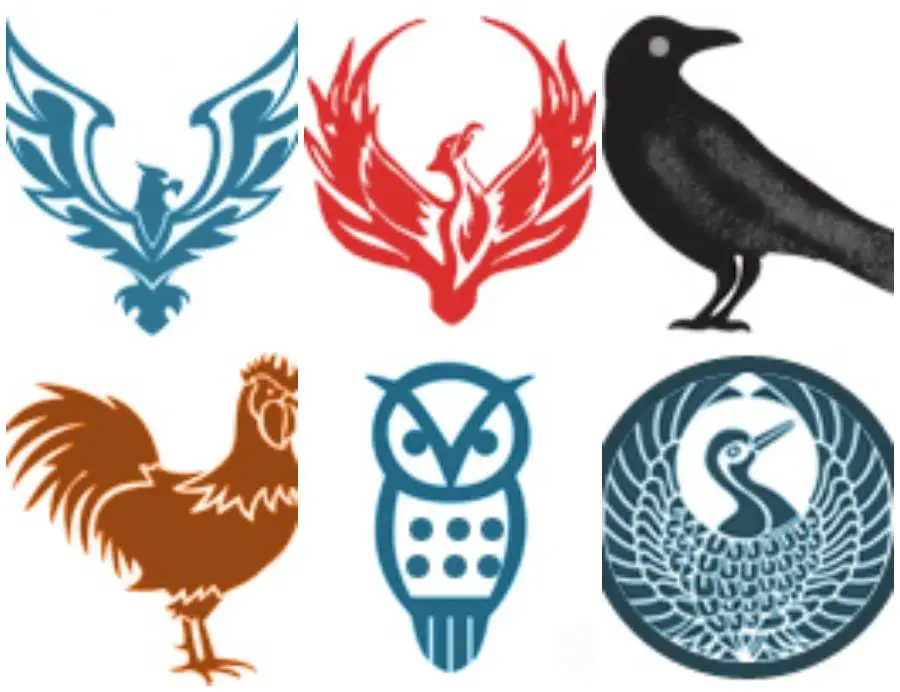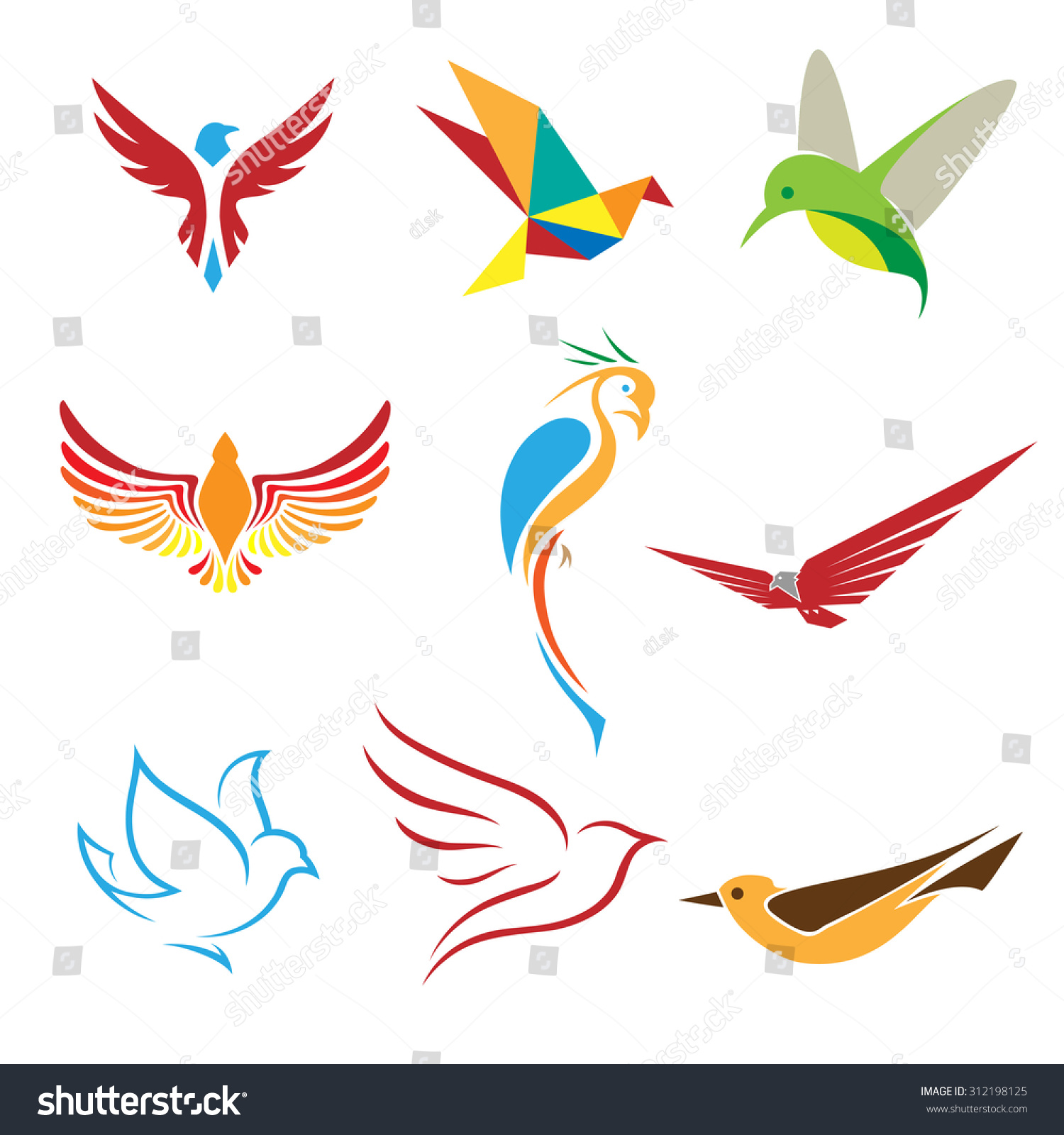Have you ever looked up into the sky and seen a bird soaring gracefully, feeling like it carried a deeper meaning? Birds as symbols have been woven into human culture, mythology, and spirituality for centuries. They're not just creatures of the air—they're messengers, guides, and emblems of what lies beyond our world. Whether it's the majestic eagle representing freedom or the humble dove embodying peace, these winged wonders hold secrets that resonate with us on a profound level.
From ancient civilizations to modern times, people have looked to birds for inspiration, guidance, and even warnings. The way they fly, sing, and interact with their environment carries layers of symbolism that can help us understand ourselves better. Birds as symbols aren't just about beauty—they're about meaning, connection, and transformation.
In this article, we'll dive deep into the world of birds as symbols, exploring their cultural significance, spiritual meanings, and the lessons they teach us. If you've ever wondered why certain birds seem to carry such powerful messages, you're in the right place. Let's spread our wings and take flight into this fascinating topic!
Read also:The Ultimate Guide To Honduras Paralympic Medal Success
Table of Contents
- The History of Birds as Symbols
- Cultural Significance of Birds
- Spiritual Meanings Behind Birds
- Common Birds and Their Symbolism
- Birds in Mythology and Legends
- Modern Interpretations of Bird Symbolism
- Psychological Perspectives on Birds
- Birds in Art and Literature
- Environmental Messages Carried by Birds
- Wrapping It Up
The History of Birds as Symbols
Let's rewind the clock and explore how birds became such powerful symbols in human history. Back in the day, our ancestors didn't just see birds as animals—they saw them as divine messengers, omens, and signs from the universe. Archaeologists have uncovered evidence of bird symbolism dating back thousands of years, from cave paintings to ancient texts. These feathered creatures weren't just admired for their beauty; they were revered for their connection to the heavens.
In ancient Egypt, the falcon was a symbol of royalty and the sun god Ra, while in Greece, the owl represented Athena, the goddess of wisdom. The Native Americans viewed birds as spirit guides, and many tribes believed that certain birds could carry prayers to the spirit world. Birds as symbols have been part of human storytelling since the beginning of civilization, and their meanings have evolved over time but remain deeply rooted in our collective consciousness.
Why Birds Were Seen as Divine Messengers
Think about it—birds have this incredible ability to soar above the earth, bridging the gap between the terrestrial and the celestial. This unique characteristic made them perfect candidates for divine messengers. Whether it was the Romans using augury to interpret the flight patterns of birds or the Vikings believing that ravens carried messages from the gods, birds were seen as intermediaries between humans and the divine.
Cultural Significance of Birds
Every culture has its own take on birds as symbols, and these interpretations can vary wildly depending on geography, history, and beliefs. In Japan, the crane is a symbol of longevity and good fortune, often featured in traditional art and ceremonies. Meanwhile, in India, the peacock is associated with beauty, grace, and even spirituality, as it's linked to the goddess Saraswati.
Even in Western cultures, birds carry specific meanings. The dove is universally recognized as a symbol of peace, while the eagle is a powerful emblem of strength and freedom. These cultural associations aren't random—they're shaped by history, mythology, and the natural behaviors of the birds themselves.
Regional Variations in Bird Symbolism
- In Africa, the ostrich is seen as a symbol of patience and determination.
- In China, the phoenix represents rebirth and renewal.
- In Celtic traditions, swans are associated with love and fidelity.
Spiritual Meanings Behind Birds
Spiritually speaking, birds as symbols go beyond cultural interpretations—they dive straight into the soul. Many spiritual traditions view birds as guides that help us navigate life's challenges and connect with higher realms. For example, seeing a cardinal might remind you to focus on love and relationships, while encountering a raven could signal a time of transformation or change.
Read also:Claire Saffitz Baby A Deep Dive Into The Life And Journey Of The Renowned Baker
Some people believe that birds carry messages from loved ones who have passed away, offering comfort and reassurance during tough times. Others see them as signs of spiritual growth, encouraging us to spread our wings and embrace new opportunities. Whatever your belief system, it's hard to deny the spiritual energy that birds bring to the table.
How Birds Connect Us to the Spiritual Realm
Have you ever felt a sudden sense of calm or clarity after seeing a bird? That's because birds have a way of grounding us while simultaneously lifting us up. They remind us to stay present while also encouraging us to dream big. Whether you're into meditation, prayer, or simply enjoying nature, birds can be powerful allies in your spiritual journey.
Common Birds and Their Symbolism
Now let's get specific and break down some of the most common birds and the meanings behind them. You don't need to be an ornithologist to understand these symbols—just a keen observer of the world around you. Here's a quick rundown:
- Eagle: Freedom, power, and vision.
- Dove: Peace, purity, and innocence.
- Owl: Wisdom, intuition, and mystery.
- Swan: Grace, beauty, and loyalty.
- Raven: Transformation, intelligence, and mystery.
These birds aren't just random animals—they're living metaphors for the qualities we admire and aspire to. Next time you see one of these feathered friends, take a moment to reflect on what they might be trying to tell you.
Uncommon Birds with Unique Symbolism
While the eagle and dove get most of the attention, there are plenty of other birds with fascinating symbolism. The hummingbird, for instance, represents joy, resilience, and the ability to adapt. The pelican is a symbol of selflessness and sacrifice, while the flamingo embodies balance and harmony. These lesser-known birds offer fresh perspectives and remind us that every creature has something valuable to teach us.
Birds in Mythology and Legends
Mythology is packed with stories of birds playing pivotal roles in the grand narrative of human history. In Norse mythology, the god Odin had two ravens, Huginn and Muninn, who brought him news from the world below. In Greek mythology, the phoenix was a bird that rose from its own ashes, symbolizing rebirth and renewal. And let's not forget the Thunderbird, a legendary creature in Native American folklore that controls the weather and brings storms.
These myths aren't just entertaining stories—they're allegories for life's challenges and triumphs. Birds in mythology often represent the forces of nature, the cycle of life, and the balance between light and dark. They remind us that even in the face of adversity, there's always hope for renewal and transformation.
Famous Mythical Birds and Their Meanings
- Phoenix: Rebirth and renewal.
- Thunderbird: Power and protection.
- Harpies: Danger and destruction.
Modern Interpretations of Bird Symbolism
Fast forward to today, and birds as symbols are as relevant as ever. In modern culture, they pop up in everything from tattoos to social media hashtags, each carrying its own unique meaning. A tattoo of a sparrow might symbolize adventure and freedom, while a hashtag like #SpreadYourWings encourages people to embrace new opportunities. Birds have become a universal language of inspiration and empowerment.
Even in the realm of psychology, birds are used as metaphors for personal growth and self-discovery. Therapists often encourage clients to think about birds when working through issues of fear, limitation, or stagnation. After all, what better way to overcome obstacles than by imagining yourself taking flight?
Birds in Popular Culture
From movies like "The Birds" to songs like "Let It Be," birds have left an indelible mark on modern culture. They inspire art, music, and literature, reminding us of the beauty and complexity of the natural world. Whether you're watching a documentary about migratory patterns or reading a poem about a lonely seagull, birds continue to captivate our imaginations.
Psychological Perspectives on Birds
Psychologists have long been fascinated by the connection between birds and human behavior. Birds as symbols often reflect our innermost desires, fears, and aspirations. For example, seeing a bird flying high might inspire feelings of freedom and possibility, while spotting a bird trapped in a cage could trigger feelings of confinement or limitation.
Carl Jung, the famous psychoanalyst, believed that birds represented the bridge between the conscious and unconscious mind. He saw them as symbols of transcendence, reminding us that we're capable of rising above our limitations and reaching new heights. This psychological perspective adds another layer of depth to the already rich tapestry of bird symbolism.
How Birds Influence Our Emotions
Have you ever noticed how your mood shifts when you see a bird in flight? There's something about their grace and freedom that instantly lifts the spirit. Birds have a way of tapping into our emotions and helping us process complex feelings. Whether you're feeling stuck, lost, or inspired, birds can offer a fresh perspective and a sense of hope.
Birds in Art and Literature
Artists and writers have been fascinated by birds for centuries, using them as muses, metaphors, and musings. Think about Van Gogh's "The Starry Night," where crows soar across a swirling sky, or Emily Dickinson's poetry, where birds often represent the fragility and beauty of life. Birds have inspired countless masterpieces, each offering a unique interpretation of their symbolic power.
Even in contemporary art, birds continue to be a popular subject. From abstract paintings to digital illustrations, artists find endless inspiration in the shapes, colors, and movements of birds. They remind us that art, like life, is a journey of discovery and transformation.
Iconic Artworks Featuring Birds
- Van Gogh's "The Starry Night"
- M.C. Escher's "Sky and Water"
- Georgia O'Keeffe's "Blue and Green Music"
Environmental Messages Carried by Birds
Birds aren't just symbols—they're also powerful messengers of environmental awareness. As climate change and habitat destruction threaten their populations, birds serve as canaries in the coal mine, warning us of the dangers ahead. Their presence—or absence—in our ecosystems tells us a lot about the health of the planet.
Conservationists around the world are working tirelessly to protect bird habitats and ensure their survival. By paying attention to the messages carried by birds, we can learn how to live more sustainably and coexist with the natural world. Birds as symbols remind us that we're all connected, and that our actions have far-reaching consequences.
How Birds Reflect the Health of Our Planet
If you notice fewer birds in your area, it could be a sign of environmental distress. Pollution, deforestation, and climate change are all taking a toll on bird populations, and it's up to us to take action. By supporting conservation efforts and making eco-friendly choices, we can help ensure that future generations get to experience the magic of birds as symbols and living creatures.
Wrapping It Up
So there you have it—a deep dive into the world of birds as symbols. From ancient myths to modern interpretations, these feathered creatures continue to inspire, guide, and challenge us. Whether you're drawn to the majestic eagle, the peaceful dove, or the mysterious raven, there's a bird out there that speaks to your soul.
As we've explored in this article, birds as symbols carry layers of meaning that resonate with us on a personal, cultural, and spiritual level. They remind us to stay grounded while reaching for the stars, to embrace change while staying true to ourselves, and to respect the environment that sustains us all.
Now it's your turn to spread your wings and share your thoughts. Leave a comment below and let me know which bird resonates with you the most. And if you enjoyed this article, don't forget to share it with your friends and family. Together, we can keep the conversation about birds as symbols alive and thriving!


